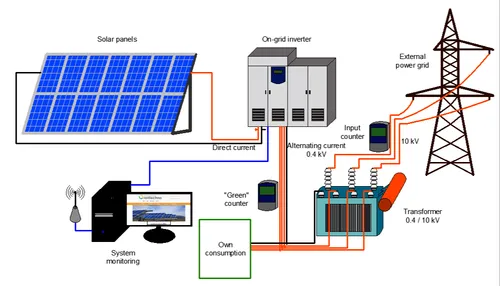The incorporation of Polyvinyl Alcohol (PVOH or PVA) in the production of electrical gears marks a significant breakthrough in material science, leading to the creation of safer, more resilient, and more efficient electrical systems. PVA, a synthetic polymer, is widely recognized for its exceptional characteristics, such as high tensile strength, flexibility, and resistance to solvents and oils. These properties make it an excellent choice for improving the performance of electrical gears. This piece delves into the diverse functions of PVA in manufacturing electrical gears, shedding light on its advantages, practical uses, and potential future advancements.
Properties of Polyvinyl Alcohol Relevant to Electrical Gears
PVA’s unique properties make it highly beneficial in producing electrical gears. Its high tensile strength and flexibility ensure that gears can withstand significant stress and deformation without breaking, which is crucial for maintaining the integrity of electrical systems. Moreover, PVA’s excellent adhesive properties facilitate the bonding of various components within electrical gears, enhancing their durability and lifespan.
The polymer’s ability to resist solvents, oils, and greases is especially beneficial in electrical applications, where prolonged exposure to these substances can cause the material to degrade. Additionally, PVA’s insulating properties are crucial for preventing electrical shorts and ensuring the safe functioning of electrical equipment.
Applications of PVA in Electrical Gear Manufacturing
In the manufacturing of electrical gears, PVA is utilized in several innovative ways:
- Insulation Coatings: PVA is a protective coating on wiring and electrical components, offering superior insulation and safeguarding against short circuits, overheating, and environmental damage.
- Composite Materials: By blending PVA with other polymers or fillers, manufacturers can create composite materials that combine the best properties of each component. These composites can be tailored to enhance mechanical strength, thermal stability, and electrical insulation, making them ideal for high-performance electrical gears.
- Adhesives and Binders: PVA is an effective adhesive or binder for assembling electrical gear components. Its strong bonding capabilities ensure a durable and stable assembly, which is crucial for the reliable operation of electrical systems.
- 3D Printing of Gear Components: The advent of 3D printing technology has opened new avenues for manufacturing custom electrical gear parts. PVA, a water-soluble support material, is extensively used in 3D printing processes. It allows for the creation of complex parts with intricate details that would be challenging to produce using traditional manufacturing methods.
Benefits of Using PVA in Electrical Gears
The utilization of PVA in electrical gears brings numerous benefits, including:
- Improved Safety: The insulating properties of PVA enhance the safety of electrical gears by preventing electrical leaks and shorts.
- Increased Durability: PVA’s resistance to environmental factors and chemicals contributes to the longevity of electrical gears, reducing the need for frequent replacements and maintenance.
- Enhanced Performance: By optimizing the mechanical and electrical properties of gears, PVA enables the development of high-performance electrical systems that are more efficient and reliable.
Future Prospects
The continuous advancements in polymer science are expected to bring about significant enhancements in the properties and uses of polyvinyl alcohol (PVA) in the production of electrical equipment. Breakthroughs such as nano-reinforcement and the creation of bio-based PVA variations are paving the way for the development of even more sustainable, efficient, and high-performance electrical gears. These innovations hold the potential to revolutionize the electrical gear manufacturing industry by offering superior functionality and eco-friendly solutions.
Conclusion
The utilization of Polyvinyl Alcohol (PVA) in manufacturing electrical gears is a beacon of innovation in material science, significantly advancing the realm of electrical engineering. The incorporation of PVA not only results in electrical gears that are safer, more durable, and exhibit enhanced performance but also reflects a conscientious move towards more sustainable manufacturing processes. PVA’s biodegradability and non-toxic nature align with the growing global mandate for environmental stewardship and sustainability in industrial practices. As industries increasingly prioritize green manufacturing processes, materials like PVA become more pivotal, offering a pathway to reduce the ecological footprint of electrical gear production.
Moreover, the adaptability and versatility of PVA as a material suggest that its application in electrical gear manufacturing is just scratching the surface of its potential. Research into modifying PVA properties through chemical treatments or blending with other materials could unlock new functionalities, opening doors to unprecedented applications in electrical gears and across various electrical and electronic devices. For instance, the exploration of PVA in nanotechnology could lead to the development of nano-composite materials that offer superior mechanical, thermal, and electrical properties, catering to the ever-increasing demands of modern electrical systems.
The promise of PVA in contributing to the advancement of electrical gear manufacturing extends beyond the technical benefits; it embodies the principles of innovation, sustainability, and forward-thinking essential for future advancements. As the industry continues to evolve, exploring PVA’s full potential could herald a new era of electrical gear manufacturing that prioritizes performance, safety, and environmental sustainability in equal measure. The journey of PVA from a simple polymer to a cornerstone of electrical gear technology exemplifies the transformative power of material science, paving the way for a future where the possibilities are as boundless as our commitment to exploring them.

